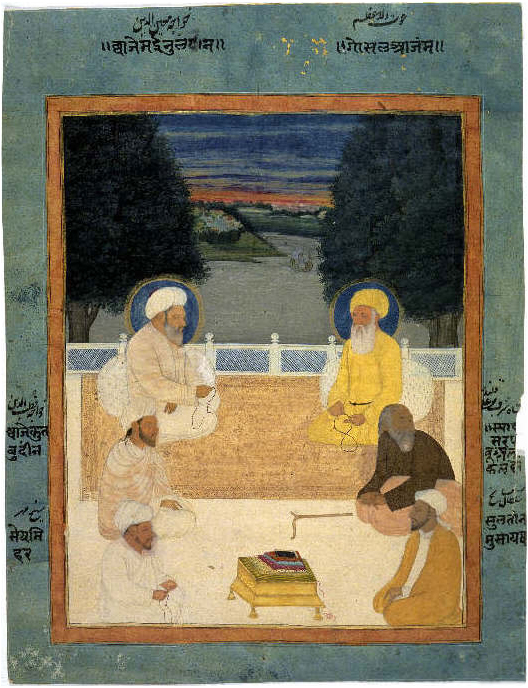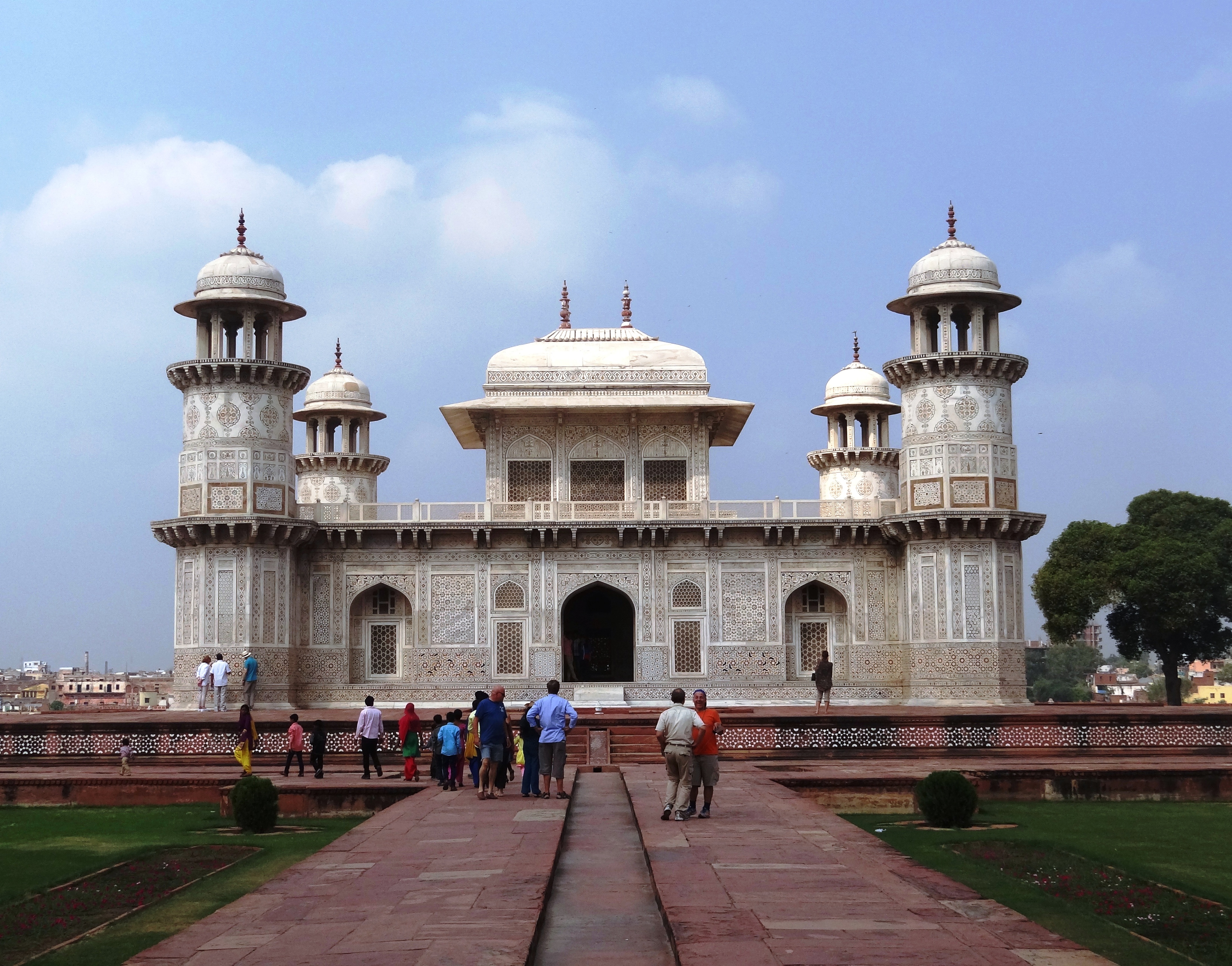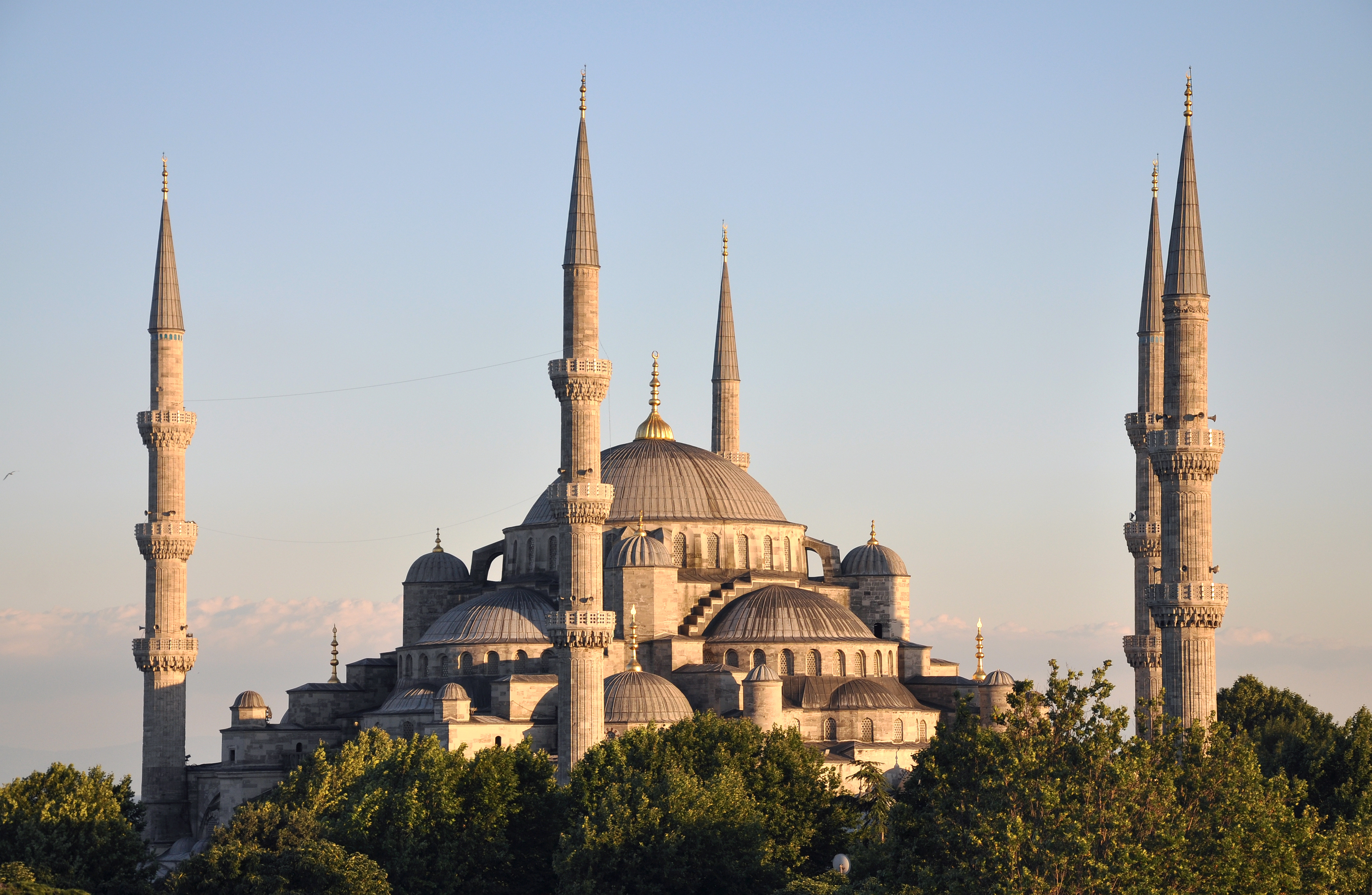|
Makhdoom Bilawal
Makhdoom Bilawal Bin Jam Hassan Samo ( sd, مخدوم بلاول بن جام حسن سمو), (Born 1451 AD/ 856 AH Sindh) was a sufi saint, philosopher and poet from Sindh, Pakistan. He is also referred as Makhdum Bilal or Bilali Makhdum. Life Makhdoom Bilawal was ordered to be crushed alive in a seed grinder after the Battle of Talti for opposing the conquest of Sindh by Arguns on 30 Safar 929AH/1522 AD. Poetry He said poems in Persian and Sindhi languages. One of his Persian Quatrain reads as follows: Shrine of Makhdum Bilawal His shrine is at 'Baghban' near the town of Dadu Sindh, Pakistan. According to the article of Aamir Sindhi Ali Wagan, the mosque at his tomb was constructed by one of his devotees Sardar Sardar, also spelled as Sardaar/Sirdar ( fa, سردار, , 'commander', literally 'headmaster'), is a title of royalty and nobility that was originally used to denote princes, noblemen, chiefs, kings and other aristocrats. It has also been u ... S ... [...More Info...] [...Related Items...] OR: [Wikipedia] [Google] [Baidu] |
Sindh
Sindh (; ; ur, , ; historically romanized as Sind) is one of the four provinces of Pakistan. Located in the southeastern region of the country, Sindh is the third-largest province of Pakistan by land area and the second-largest province by population after Punjab. It shares land borders with the Pakistani provinces of Balochistan to the west and north-west and Punjab to the north. It shares International border with the Indian states of Gujarat and Rajasthan to the east; it is also bounded by the Arabian Sea to the south. Sindh's landscape consists mostly of alluvial plains flanking the Indus River, the Thar Desert in the eastern portion of the province along the international border with India, and the Kirthar Mountains in the western portion of the province. The economy of Sindh is the second-largest in Pakistan after the province of Punjab; its provincial capital of Karachi is the most populous city in the country as well as its main financial hub. Sindh ... [...More Info...] [...Related Items...] OR: [Wikipedia] [Google] [Baidu] |
Sindhi Language
Sindhi ( ; , ) is an Indo-Aryan language spoken by about 30 million people in the Pakistani province of Sindh, where it has official status. It is also spoken by a further 1.7 million people in India, where it is a scheduled language, without any state-level official status. The main writing system is the Perso-Arabic script, which accounts for the majority of the Sindhi literature and is the only one currently used in Pakistan. In India, both the Perso-Arabic script and Devanagari are used. Sindhi has an attested history from the 10th century CE. Sindhi was one of the first languages of South Asia to encounter influence from Persian and Arabic following the Umayyad conquest in 712 CE. A substantial body of Sindhi literature developed during the Medieval period, the most famous of which is the religious and mystic poetry of Shah Abdul Latif Bhittai from the 18th century. Modern Sindhi was promoted under British rule beginning in 1843, which led to the current status of t ... [...More Info...] [...Related Items...] OR: [Wikipedia] [Google] [Baidu] |
Sindhi Warriors
Sindhi may refer to: *something from, or related to Sindh, a province of Pakistan * Sindhi people, an ethnic group from the Sindh region * Sindhi language, the Indo-Aryan language spoken by them People with the name * Sarkash Sindhi (1940–2012), poet of Sindhi language * Ubaidullah Sindhi (1872–1944), political activist * Ahmad Bakhsh Sindhi (1917–2000), a leader of the Indian National Congress * Abu Raja Sindhi, Arabic scholar * Abu Mashar Sindhi, scholar of Hadith literature See also * * Sindi (other) * Sindi people, an ancient Scythian people * Sinti, a Romani people of Central Europe * Red Sindhi Red Sindhi cattle are the most popular of all Zebu dairy breeds. The breed originated in the Sindh province of Pakistan, they are widely kept for milk production across Pakistan, India, Bangladesh, Sri Lanka, and other countries. They have been ..., a breed of cattle {{Disambiguation Language and nationality disambiguation pages ... [...More Info...] [...Related Items...] OR: [Wikipedia] [Google] [Baidu] |
Sindhi People
Sindhis ( sd, سنڌي Arabic script, Perso-Arabic: सिन्धी Devanagari; ) are an Indo-Aryan peoples, Indo-Aryan ethno-linguistic group, ethnic group who speak the Sindhi language and are native to the province of Sindh in Pakistan. After the partition of India, partition of British Indian empire in 1947, many Sindhi Hindus and Sindhi Sikhs migrated to the newly independent Dominion of India and other parts of the world. Pakistani Sindhis are predominantly Muslim with a smaller Sikhism in Pakistan, Sikh and Hinduism in Sindh Province, Hindu minority, whereas Indian Sindhis are predominantly Hindu with a Sikh, Jain and Muslim minority. Sindhi people have been native to Sindh throughout history, apart from that their historical region has always came from the South-eastern side of Balochistan, the Bahawalpur (princely state), Bahawalpur region of Punjab, Pakistan, Punjab and the Kutch district, Kutch region of Gujarat, India. The Sindhi diaspora is growing around the w ... [...More Info...] [...Related Items...] OR: [Wikipedia] [Google] [Baidu] |
Sufi Poets
Sufism ( ar, ''aṣ-ṣūfiyya''), also known as Tasawwuf ( ''at-taṣawwuf''), is a mystic body of religious practice, found mainly within Sunni Islam but also within Shia Islam, which is characterized by a focus on Islamic spirituality, ritualism, asceticism and esotericism. It has been variously defined as "Islamic mysticism",Martin Lings, ''What is Sufism?'' (Lahore: Suhail Academy, 2005; first imp. 1983, second imp. 1999), p.15 "the mystical expression of Islamic faith", "the inward dimension of Islam", "the phenomenon of mysticism within Islam", the "main manifestation and the most important and central crystallization" of mystical practice in Islam, and "the interiorization and intensification of Islamic faith and practice". Practitioners of Sufism are referred to as "Sufis" (from , ), and historically typically belonged to "orders" known as (pl. ) – congregations formed around a grand who would be the last in a chain of successive teachers linking back to Muha ... [...More Info...] [...Related Items...] OR: [Wikipedia] [Google] [Baidu] |
1523 Deaths
Fifteen or 15 may refer to: * 15 (number), the natural number following 14 and preceding 16 *one of the years 15 BC, AD 15, 1915, 2015 Music * Fifteen (band), a punk rock band Albums * ''15'' (Buckcherry album), 2005 * ''15'' (Ani Lorak album), 2007 * ''15'' (Phatfish album), 2008 * ''15'' (mixtape), a 2018 mixtape by Bhad Bhabie * ''Fifteen'' (Green River Ordinance album), 2016 * ''Fifteen'' (The Wailin' Jennys album), 2017 * ''Fifteen'', a 2012 album by Colin James Songs * "Fifteen" (song), a 2008 song by Taylor Swift *"Fifteen", a song by Harry Belafonte from the album '' Love Is a Gentle Thing'' *"15", a song by Rilo Kiley from the album '' Under the Blacklight'' *"15", a song by Marilyn Manson from the album ''The High End of Low'' *" The 15th", a 1979 song by Wire Other uses *Fifteen, Ohio, a community in the United States * ''15'' (film), a 2003 Singaporean film * ''Fifteen'' (TV series), international release name of ''Hillside'', a Canadian-American teen drama ... [...More Info...] [...Related Items...] OR: [Wikipedia] [Google] [Baidu] |
1451 Births
Year 1451 ( MCDLI) was a common year starting on Friday (link will display the full calendar) of the Julian calendar. Events January–December * January 7 – Pope Nicholas V issues a Papal Bull to establish The University of Glasgow; classes are initially held in Glasgow Cathedral. * February 3 – Murad II, Sultan of the Ottoman Empire, dies and is succeeded (on February 18) by his son, Mehmed II. * February 14 – Louis XI of France marries Charlotte of Savoy. * April 11 – Celje acquires market town status and town rights, by orders from Count Frederic II of Celje. * April 19 – In the Delhi Sultanate, the Afghan Lodi Dynasty succeeds the Turkish Sayyid Dynasty. * June 30 – French troops under Jean de Dunois invade Guyenne, and capture Bordeaux. * August 20 – The French capture Bayonne, the last English stronghold in Guyenne. * October – After assassinating Bogdan II of Moldavia, Petru Aron takes up the throne. * ... [...More Info...] [...Related Items...] OR: [Wikipedia] [Google] [Baidu] |
Sardar
Sardar, also spelled as Sardaar/Sirdar ( fa, سردار, , 'commander', literally 'headmaster'), is a title of royalty and nobility that was originally used to denote princes, noblemen, chiefs, kings and other aristocrats. It has also been used to denote a chief or leader of a tribe or group. It is used as a Persian synonym of the title ''Emir'' of Arabic origin. In modern history it is known as the title for Afghan Princes during the Afghan Royal Kingdom, descending from the Emir Sultan Mohammed Khan Telai. It was also used as a title of merit in the ''Nishan-i-Sardari'' for outstanding service in statecraft. The term and its cognates originate from Persian ''sardār'' () and have been historically used across Persia (Iran), the Ottoman Empire and Turkey (as "Serdar"), Mesopotamia (now Iraq), Syria], South Asia (Pakistan, India, Bangladesh and Nepal), the Caucasus, Central Asia, the Balkans and Egypt (as "Sirdar"). The term ''sardar'' was used by Sikh leaders and general ... [...More Info...] [...Related Items...] OR: [Wikipedia] [Google] [Baidu] |
Tomb
A tomb ( grc-gre, τύμβος ''tumbos'') is a repository for the remains of the dead. It is generally any structurally enclosed interment space or burial chamber, of varying sizes. Placing a corpse into a tomb can be called ''immurement'', and is a method of final disposition, as an alternative to cremation or burial. Overview The word is used in a broad sense to encompass a number of such types of places of interment or, occasionally, burial, including: * Architectural shrines – in Christianity, an architectural shrine above a saint's first place of burial, as opposed to a similar shrine on which stands a reliquary or feretory into which the saint's remains have been transferred * Burial vault – a stone or brick-lined underground space for multiple burials, originally vaulted, often privately owned for specific family groups; usually beneath a religious building such as a church ** Cemetery ** Churchyard * Catacombs * Chamber tomb * Charnel house * Chur ... [...More Info...] [...Related Items...] OR: [Wikipedia] [Google] [Baidu] |
Mosque
A mosque (; from ar, مَسْجِد, masjid, ; literally "place of ritual prostration"), also called masjid, is a Place of worship, place of prayer for Muslims. Mosques are usually covered buildings, but can be any place where prayers (sujud) are performed, including outdoor courtyards. The first mosques were simple places of prayer for Muslims, and may have been open spaces rather than buildings. In the first stage of Islamic architecture, 650-750 CE, early mosques comprised open and closed covered spaces enclosed by walls, often with minarets from which Adhan, calls to prayer were issued. Mosque buildings typically contain an ornamental niche (''mihrab'') set into the wall that indicates the direction of Mecca (''qiblah''), Wudu, ablution facilities. The pulpit (''minbar''), from which the Friday (jumu'ah) sermon (''khutba'') is delivered, was in earlier times characteristic of the central city mosque, but has since become common in smaller mosques. Mosques typically have Isl ... [...More Info...] [...Related Items...] OR: [Wikipedia] [Google] [Baidu] |
Shrine
A shrine ( la, scrinium "case or chest for books or papers"; Old French: ''escrin'' "box or case") is a sacred or holy space dedicated to a specific deity, ancestor, hero, martyr, saint, daemon, or similar figure of respect, wherein they are venerated or worshipped. Shrines often contain idols, relics, or other such objects associated with the figure being venerated. A shrine at which votive offerings are made is called an altar. Shrines are found in many of the world's religions, including Christianity, Islam, Hinduism, Buddhism, Chinese folk religion, Shinto, indigenous Philippine folk religions, and Asatru as well as in secular and non-religious settings such as a war memorial. Shrines can be found in various settings, such as churches, temples, cemeteries, museums, or in the home. However, portable shrines are also found in some cultures. Types of shrines Temple shrines Many shrines are located within buildings and in the temples designed specifically for wo ... [...More Info...] [...Related Items...] OR: [Wikipedia] [Google] [Baidu] |







